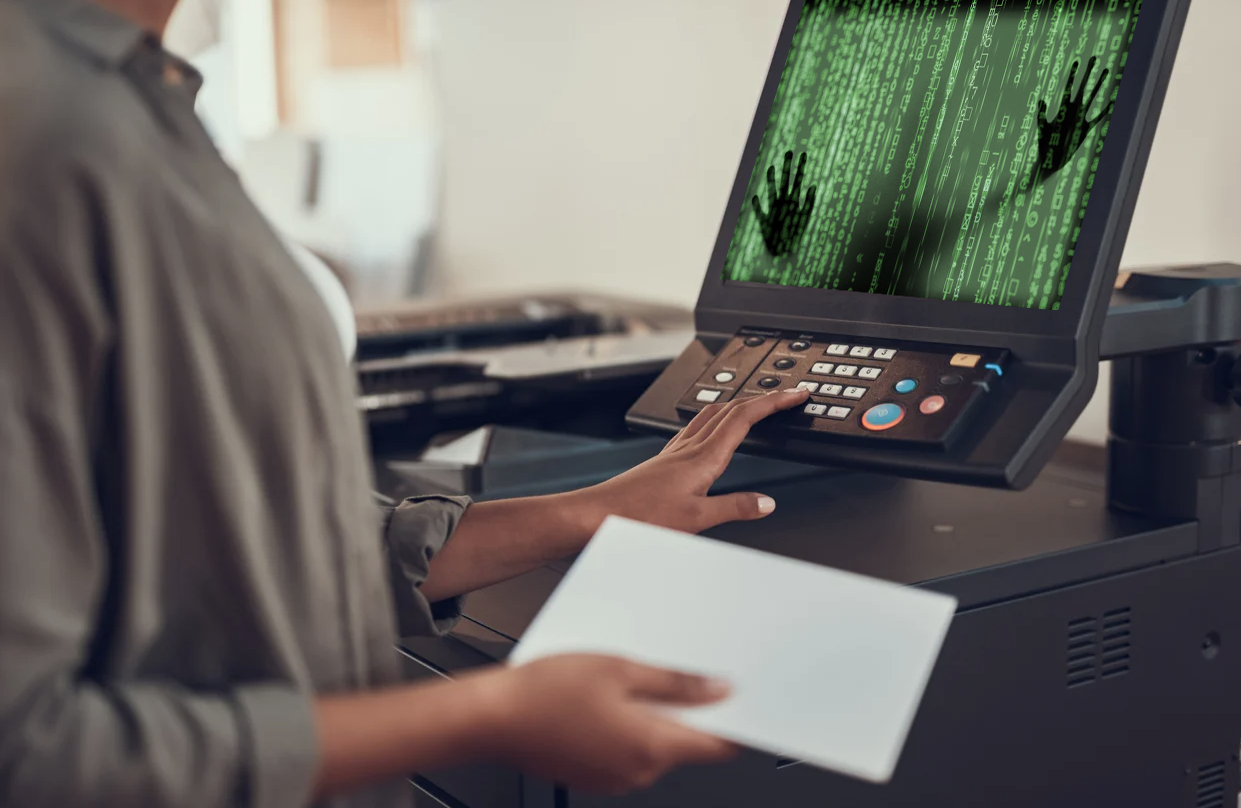The deadline you’re trying to meet just turned into a dead end simply because your printer/copier malfunctioned—again.
Or perhaps you should’ve replaced it after the security system was compromised and hackers installed ransomware on your entire network—for the second time.
Eventually, random printer errors will become a harbinger of disaster that can cost days (sometimes weeks) of productivity and expenses that can eat away at your operating budget.
While it may seem easy to push off expenses to a later date, being pennywise but pound foolish when it comes to your business’ workflow will one day catch up with your operating budget.
Similar to a vehicle’s maintenance schedule, a professional document and managed service provider should have introduced a preventative maintenance program with system monitoring to help ensure your printer/copier’s functionality and keep your downtime at an all-time low.
Printer Lifecycle
As a rule, multi-function printers (MFPs) have a lifecycle of five to seven years. However, managing aged equipment begins by understanding that the age of your printer or copier does not refer to the year you purchased the equipment but rather:
- How many hours per day and days per year does it operate
- What environment does the equipment operate (i.e., heat, cold, dust, humidity)
- The pace of technology advances and integrations that could force your machine into obsolescence
- The supply of parts and consumables that are readily available after the OEM no longer supports the equipment
The Hidden Costs of Operating Aged Printer Equipment
- Lost productivity or bottlenecks
- Elevated risk of a security/data breach
- Increased burden on internal IT department
- Delayed transactions that impact revenue stream
- Lack of replacement parts and consumables and/or increased costs
- Critical applications that affect revenue, company value, or relative value to the business
- Payroll costs when resource(s) cannot be diverted to an equal-value task
Ways to Detect Aged Equipment
Print quality or print time is no longer sufficient to sustain operations.
Your printer is leaving streaks, smudges, or blank areas on the paper, and you notice a reduction in the paper output speed. Not only does this waste toner and paper, but slow or poor print quality creates the need for duplicate work thereby:
- Doubling your effort
- Delaying time-sensitive actions
- Increasing waste
- Accelerating wear on the machine
Critical document transactions are delayed.
When key communications aren’t delivered, and if employees are unable to switch to another task of relative value, your business loses value and revenue could be adversely affected.
Examples include:
- Invoices and other important documents not being output
- Documents in need of electronic signatures cannot be transferred or obtained,
- Time-sensitive communications lose effectiveness
Hardware/Software technology is being phased out, or no longer supported.
Critical applications that affect revenue, or relative to the value of the business are often limited by outdated technology issues and the lack of support. This can mean delayed transactions and in the worst-case scenario, lost revenue.
Equipment keeps malfunctioning or breaking down.
Employees who depend on timely print operations to complete process- or time-sensitive transactions will not be able to finish the task at hand. Likewise, IT staff will also experience an increased burden if they are responsible for supporting printing devices, which can cause delays fulfilling other help desk tickets. A key indicator that you are on the brink of a repair is that the printer’s fan will work overtime to keep the hardware cool.
As time goes on, the availability of parts and supplies of aged or obsolete equipment will become more difficult and more expensive to purchase. At this point, many office managers choose to use non-OEM parts and supplies. However, many off-brand supplies that claim to be compatible with your machine often use inferior materials resulting in further wear and breakdown.
Assessing the Total Cost of Ownership associated with Aged Printer/Copiers
James Imaging Systems Managed Print Services examines your Total Cost of Ownership through a cost-valuation audit. These insights have been of tremendous value to clients who understand that replacing an aged printer or copier system actually saves them more in the long run—even reducing their total print spend by as much as 30% annually.
Below is a list of considerations that can help you evaluate the cost/value impact to your bottom line, and know when it’s time to replace your aged equipment:
- Unplanned downtime
- A conservative example of figuring the cost of downtime uses three basic factors:
- Peak operating capacity hours
- frequency of copy machine breakdowns
- User productivity
- A conservative example of figuring the cost of downtime uses three basic factors:
- Output/Usability/Reliability
- Volume of copies
- Number of users
- Printing time and print queue capacity
- Mechanical issues
- Software updates/upgrades/integrations
- Security measures
- Burden on servers and/or electrical supply
- Availability of parts and supplies, or increased cost
- Maintenance costs
- The number of service requests
- Security features
- Encrypted hard drives, secure scans, password protection
- Critical or time-sensitive transactions
- Planned downtime
- System maintenance and updates
- Facility closures
- Machine Updates
- Scope of Technical Support
- The number of vendors required to maintain operation (Hardware, Software, IT services)
- Response time


